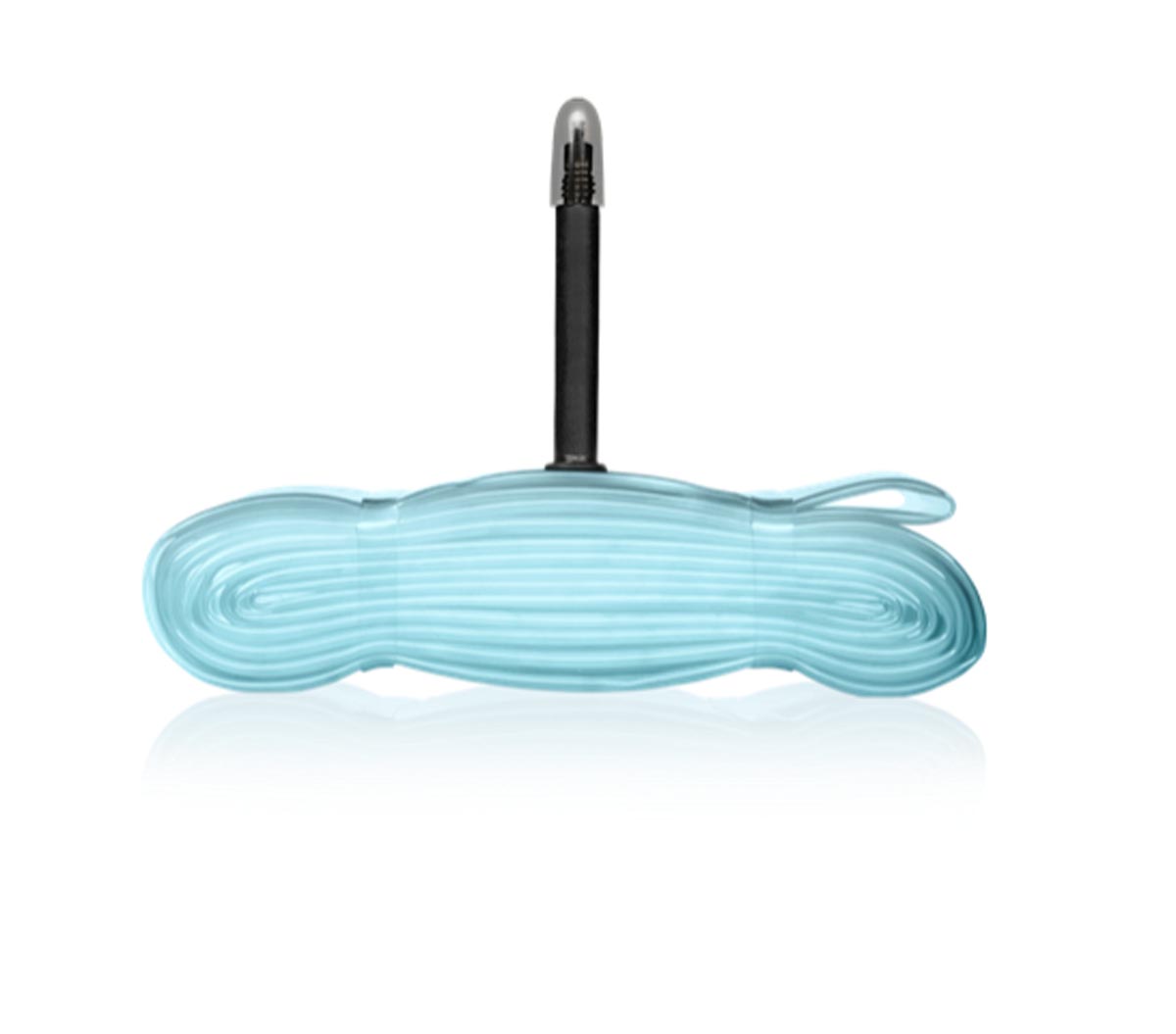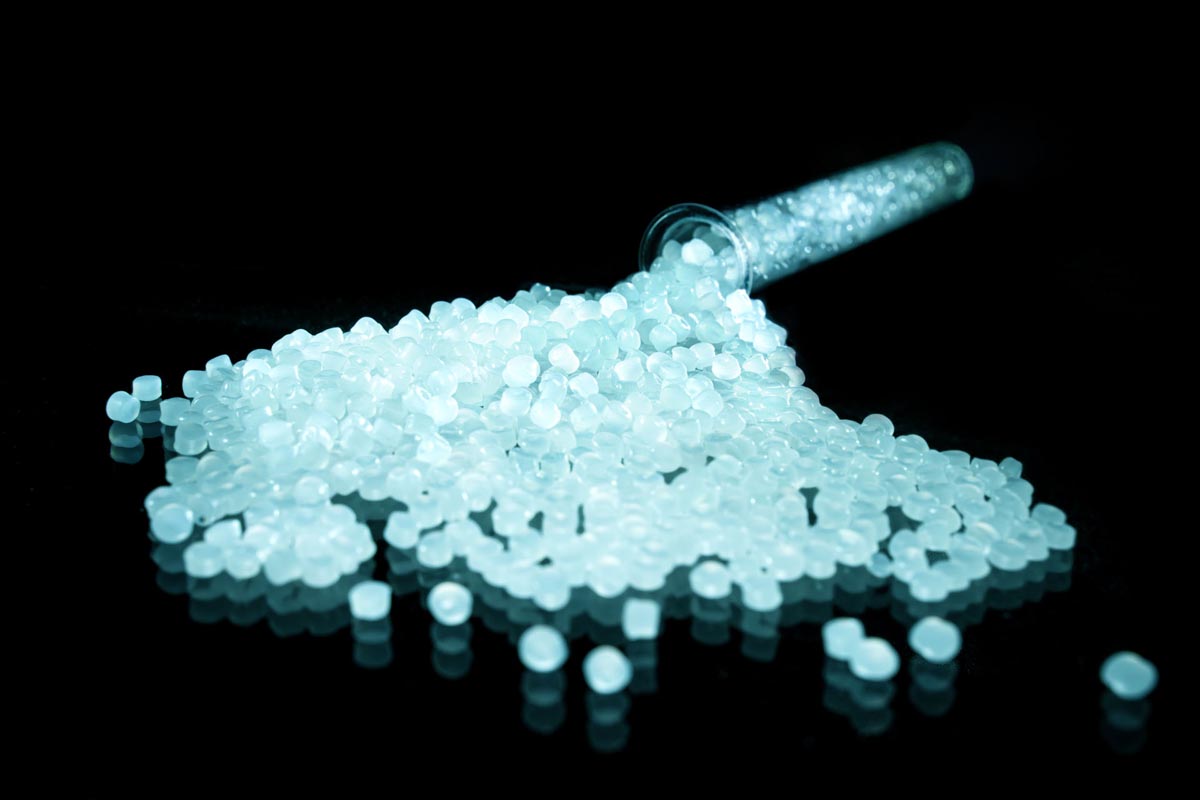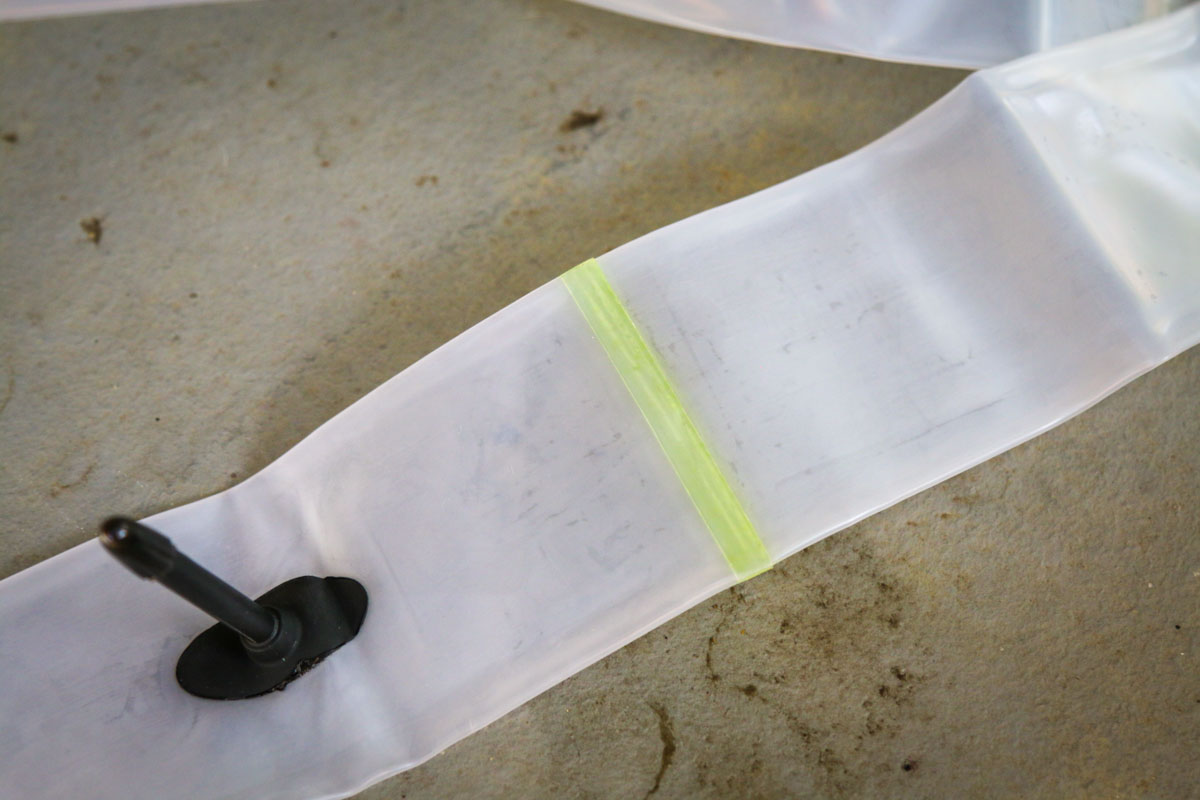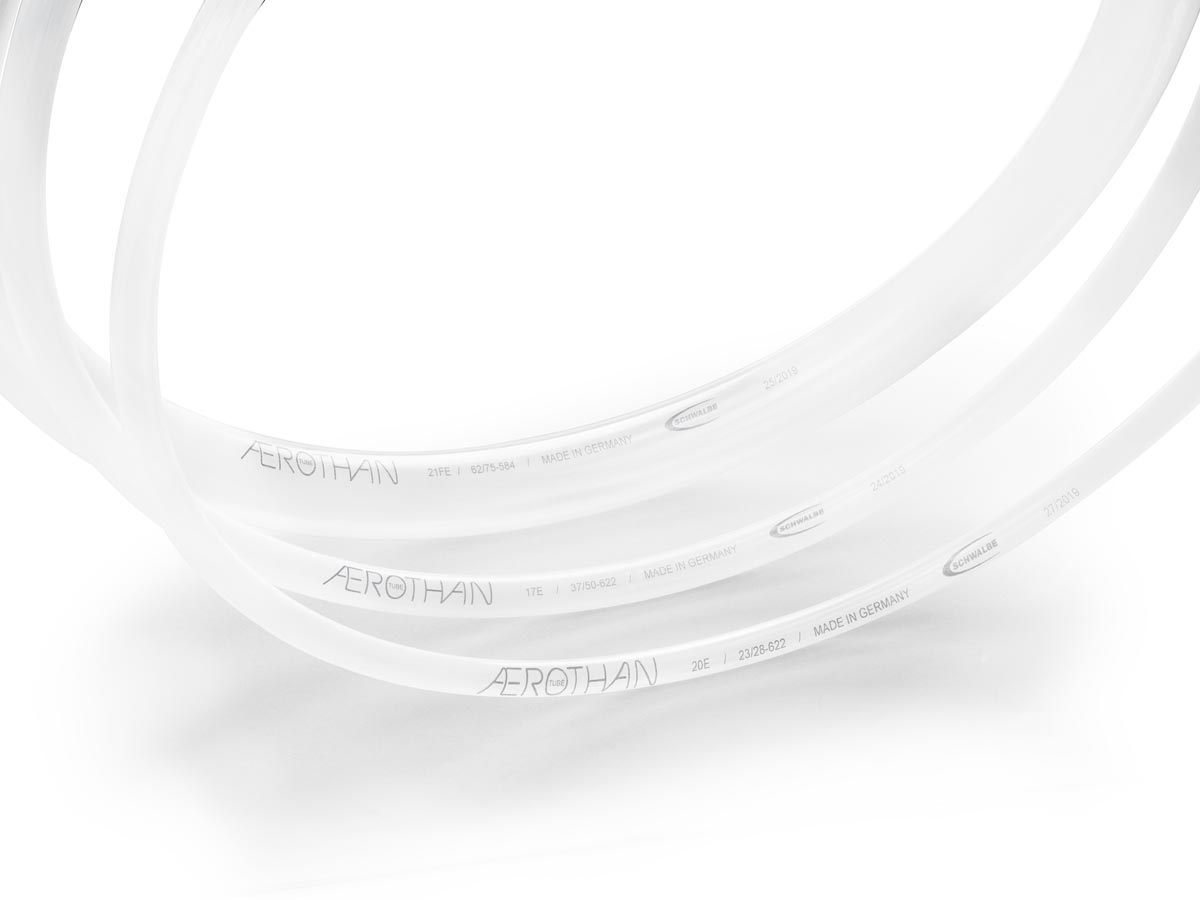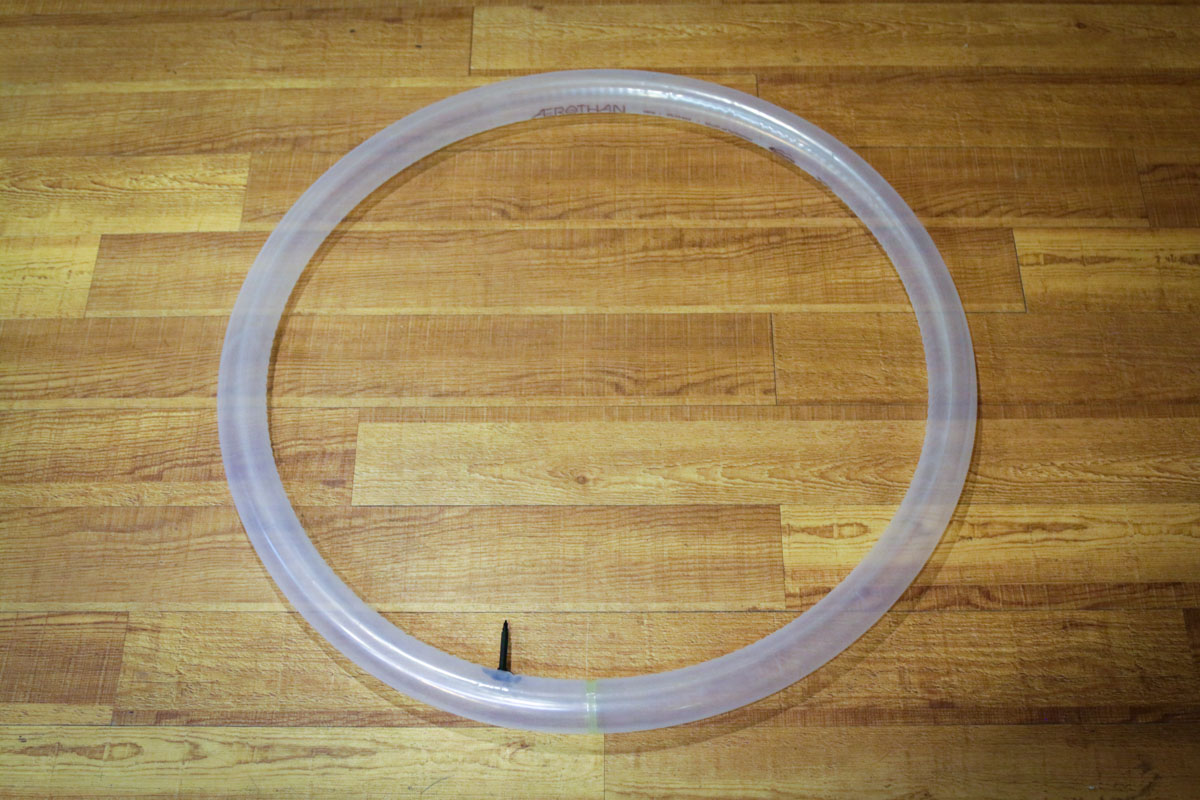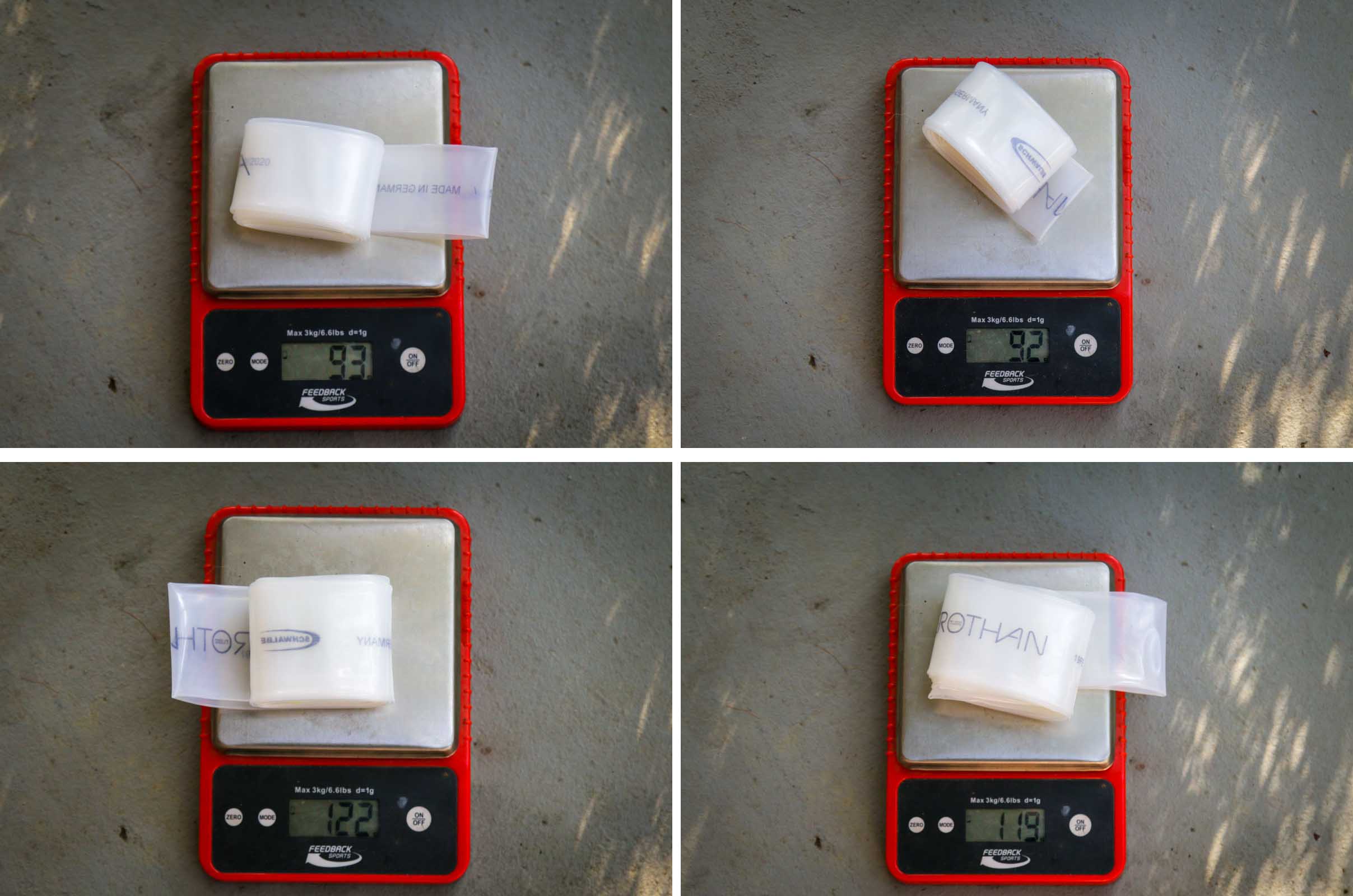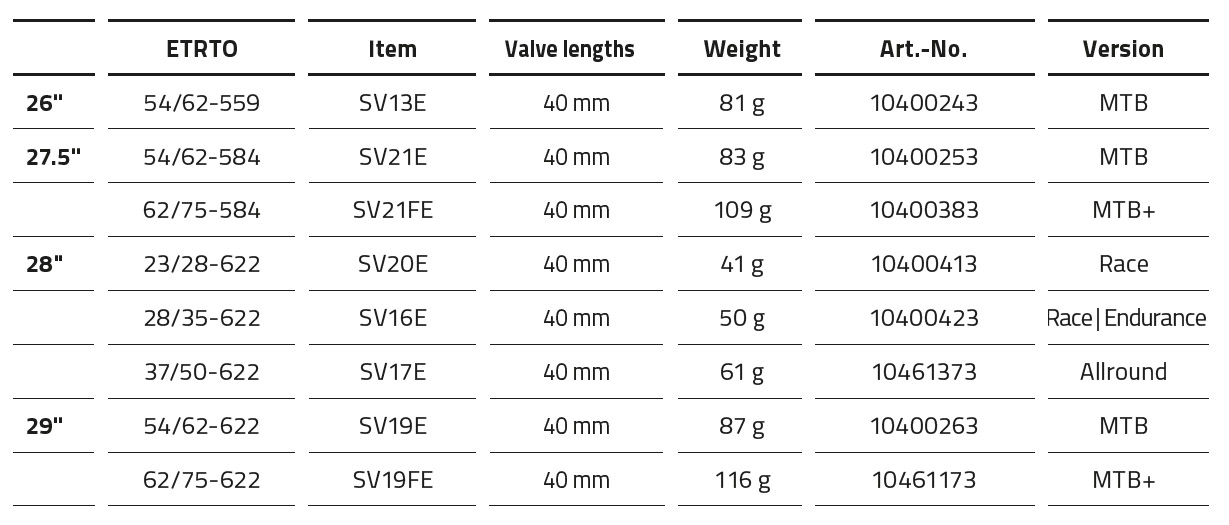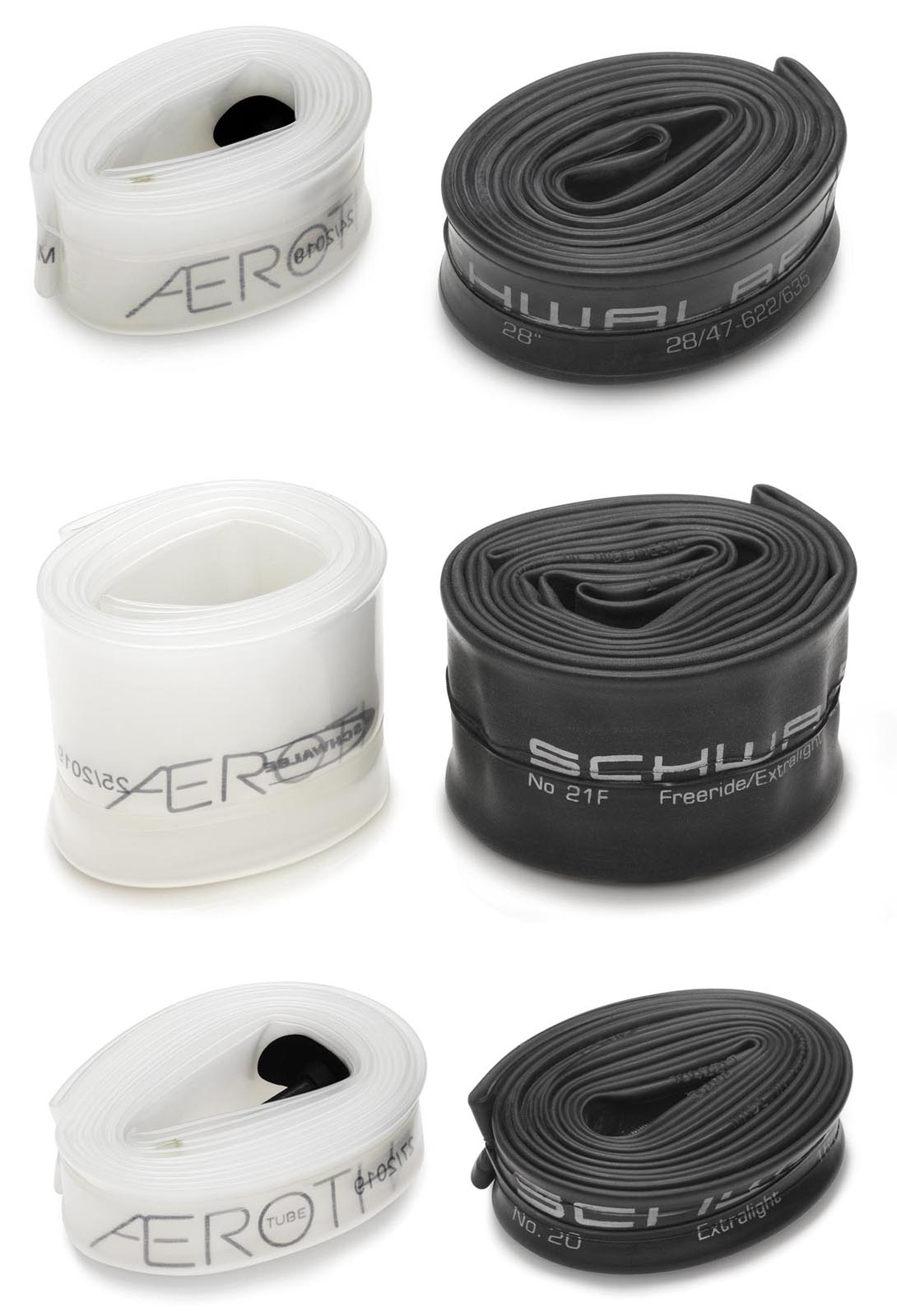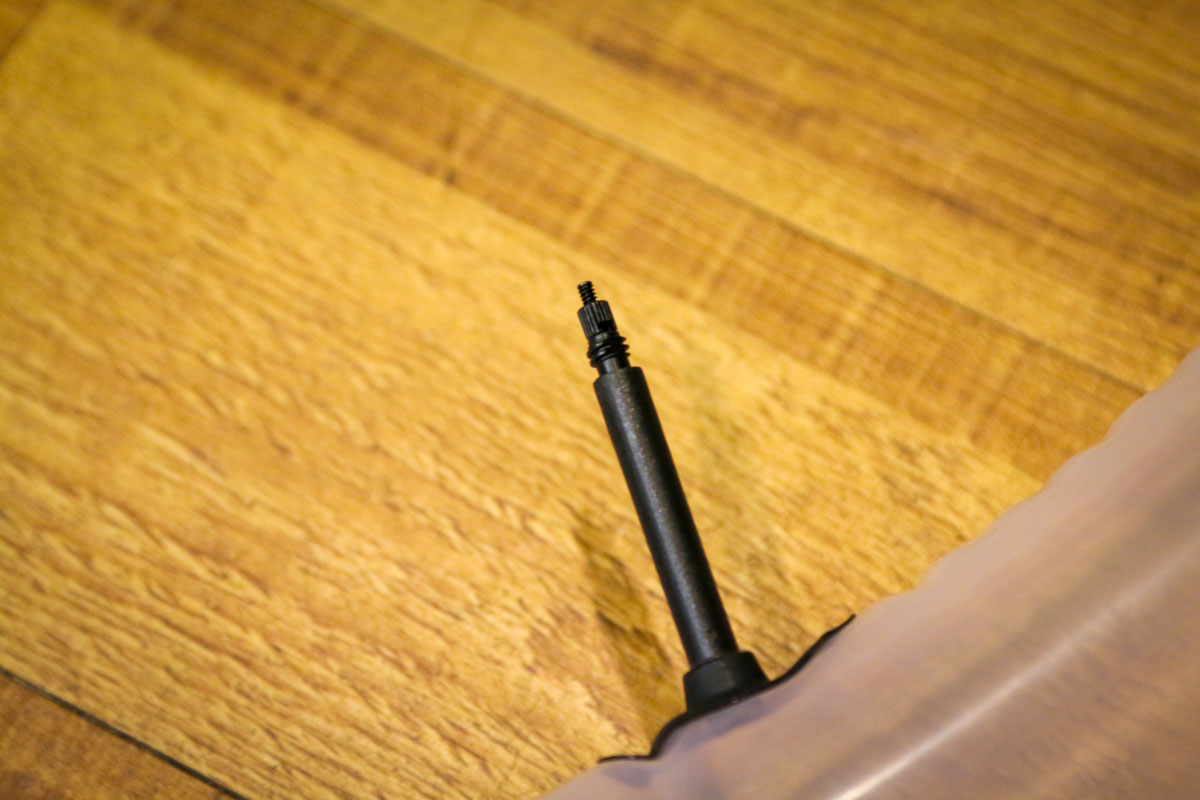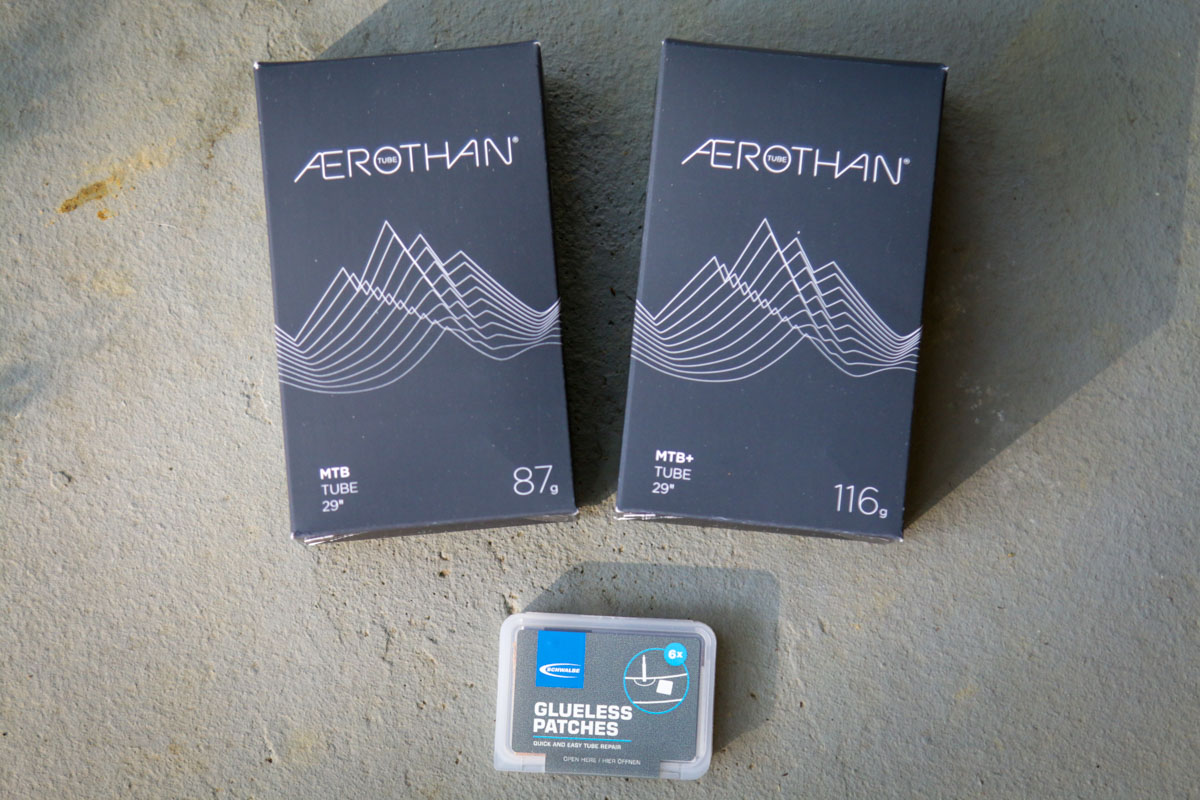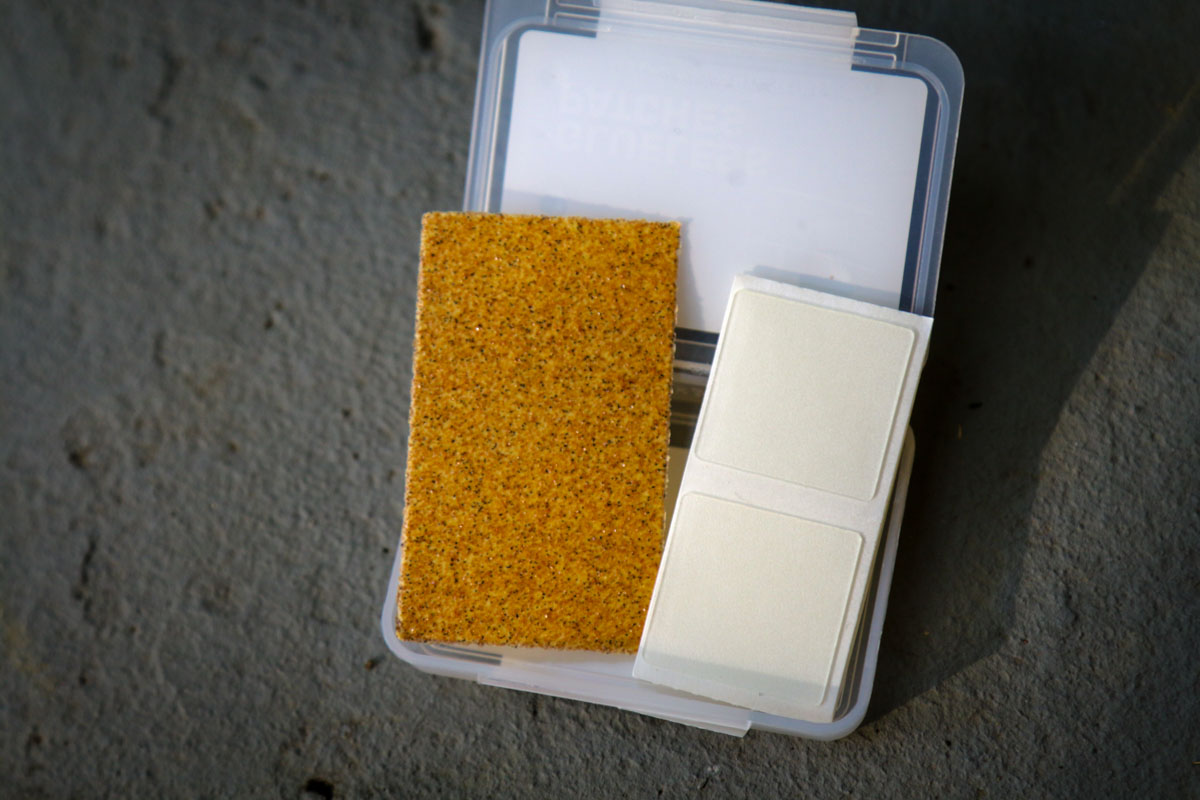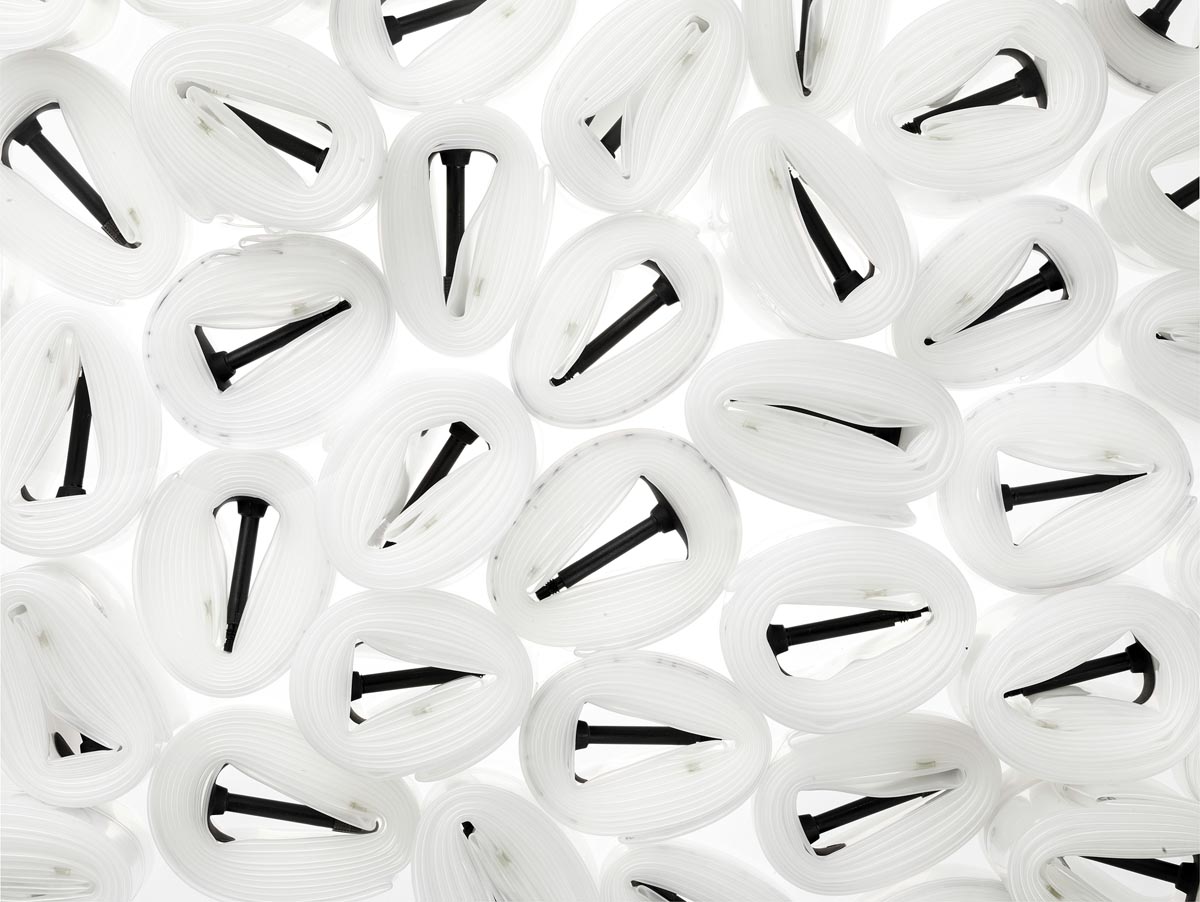It seems like forever ago that we were actually at a trade show, seeing new goods first hand. In 2015, that included the opportunity to check out Schwalbe’s revolutionary new inner tube made from a material they called Aerothan. While it was certainly an exciting product, it had some serious weaknesses – like not being rim brake compatible. Now that Schwalbe has been working with BASF for the past five years, it seems like they’ve perfected the Aerothan thermoplastic polyurethane material. The result is a tube that claims to be superior in almost every way.
Aerothan
Unlike most tubes that are made of rubber, Aerothan tubes are made from thermoplastic polyurethane. That helps cut down on the weight, but it also has a number of other benefits.
Now Rim Brake Compatible
The previous Aerothan tubes claimed to offer equal puncture protection to standard tubes. These new Aerothan tubes now claim to offer more than double the puncture protection with a force of 47 newtons needed to puncture the tube. Schwalbe goes on to claim that the new Aerothan tubes are the best performers for the snake bite guillotine test, and they also offer the best heat resistance.
That last part is critical. The original tubes were not rim brake compatible because they couldn’t take the heat. New Aerothan tubes are capable of withstanding more than 150°C at 78km/h in a special test developed by Schwalbe. Considering road riders are the most likely to still be running tubes, and a lot of riders are still on rim brakes, this compatibility is a big plus for Aerothan.
Schwalbe also states that since the material offers extra stability compared to rubber, Aerothan tubes are safer in the event of a puncture. Instead of going instantly flat, the tubes should hold their shape and slowly go flat in a controlled manner.
Even though the tubes are more stable, they also claim to offer a more damped ride feel with lower rolling resistance – about equal to a latex tube.
Actual weights
Of course, then there’s the weight question. Schwalbe says that on a road bike you can expect up to 100g of savings per bike with normal inner tubes. Considering these may offer better puncture protection, lower rolling resistance, and a better, safer ride, the fact that they’re lighter as well is pretty impressive.
On our scale, the MTB 29 and MTB 29+ came in slightly heavier than claimed at 87g vs. 92/93g, and 116g vs. 119/122g. Road tubes have claimed weights as low as 41g, and there are also tubes available for 26″ and 27.5″ Technically, there are three categories – road (race/endurance), trekking (Allround), and mountain bike (MTB & MTB+).
Compared to a standard inner tube, the Aerothan tubes are definitely more compact, but not massively different in size. But the light weight is noticeable when you tuck a spare into your jersey pocket.
Not all pumps are compatible
It’s worth noting that these have a plastic valve stem, with a standard, removable valve core. However, since the valve stem is unthreaded, these are not compatible with certain pumps that require those threads to ‘thread on’ to the valve. If you’re carrying one of these as a spare, make sure your pump is compatible ahead of time!
Patching
If you do manage to puncture a tube, no worries. Schwalbe offers a glueless patch kit that is simple to use. Rough up the tube with the included sand paper, stick the patch on, and press.
Pricing
Now for the catch. You knew there had to be one, right? Like the Tubolito, these tubes are much more expensive than your average inner tube. The Aerothan tubes run between €27.90-29.90. That’s roughly $32-$35 per tube. Even the high end Silca Latex inner tube is only $16. However, if these really do offer increased puncture protection and durability, that cost may be worth it in the long run.
Personally, like the Tubolito, I see these as the perfect backup tube. With all of my bikes set up tubeless, I always bring a spare tube just in case. But I hardly ever flat. And when I do, I can’t remember a time in recent memory that it couldn’t be fixed with a tire plug. That leaves me carrying heavy rubber inner tubes around for so long without using them, that I recently discovered one had a hole in it even though it had never been used. It’s a pricey spare, but the lower weight and more compact form is welcome in a flat kit where space is at a premium.
